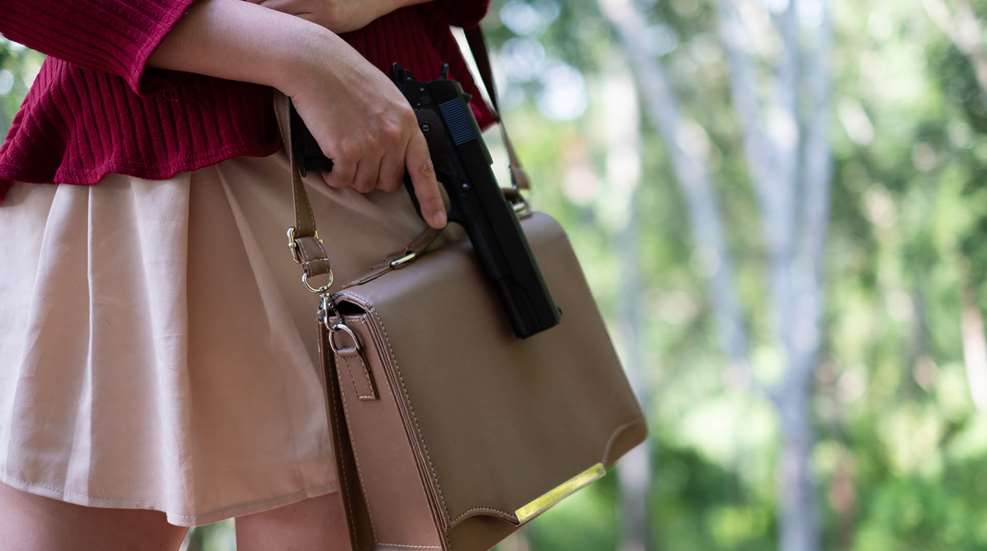
Two great things about the internet are the tremendous access to nearly infinite amounts of information and the opportunity to communicate with others. Unfortunately, when you combine those two wonderful things, you end up with a fair amount of utter junk. In an environment where anyone can say anything, it’s important to seek authoritative sources and weed out the misinformation, crazy opinions and just plain bad advice. The self-defense world is no exception. All of the following are things I have actually seen people say in all seriousness online or in person. I implore you not to fall for any of these ignorant, foolish or downright dangerous and illegal self-defense myths.
Myth 1: "Shoot to Warn"
Or through the door, or at the ground—this notoriously bad “fire a warning shot” advice is a favorite of politicians and other people who have little to no training. No. Don’t fire a warning shot. The situation is either serious enough that you need to shoot to stop the threat or it’s not. If it’s not that serious yet, for heaven’s sake, don’t go wasting time and ammo (and maybe picking up a legal charge or two) just shooting randomly.
Related to this is the old “the sound of a pump shotgun will scare a bad guy away” advice. Yeah, it’s possible, but don’t count on it.
Myth 2: "Brandish Your Gun to Warn"
Not every defensive gun use results in a pulled trigger—and that’s a good thing. There are some situations in which pulling your gun will stop the threat without you needing to fire. Count yourself fortunate if that happens, but you absolutely cannot count on that being the case. Do not introduce a gun into the situation if you’re not willing to use it!
Myth 3: "You Can Outdraw an Attacker"
Maybe you can outdraw your attacker and maybe you can’t, but your quick draw is no match for an already drawn gun. If you’re being assaulted and the criminal’s gun or knife is pointed at you, it’s almost certainly too late for you to draw and use your gun. Now, you might be forced to try anyway as your only option, but only if it's your only option.
Myth 4: "Shoot to Wound"
This “advice” is frequently spouted by people who know nothing about guns. It seems logical to the uninformed that you could avoid having to take a life if you just shot the gun out of the assailant’s hands or shot him in the leg so he can’t run away and the police can apprehend him. Of course, anyone who knows anything about self-defense, ballistics or anatomy knows why this won’t work—the arms and legs are small, fast-moving targets, and thus difficult to hit. Even if you could hit someone in the arm or leg, that doesn’t mean the threat has stopped. Which leads me to …
Myth 5: "Shoot to Kill"
Armchair attorneys throw around the terrible advice that you should always shoot to kill because then you don’t have to worry about a lawsuit and it won’t be his word vs. yours. For goodness' sake! In self-defense, we shoot to stop the threat—period. We do not “shoot to kill” and we certainly don’t throw that phrase around like it makes us some sort of tough guy. You shoot to stop the threat effectively, however that ends up for the attacker.
Myth 6: "Stage the Scene so it’s Clearly Self-Defense"
I think the proliferation of criminal-investigation and forensic science television shows have tamped this advice down, but it used to be common to hear those same armchair attorneys mentioned in #5 spout nonsense about how if you needed to shoot someone in your yard or on your porch, you should drag their body into your house before you call the police. This, they reason, will make it clear to everyone that you shot in self-defense.
You already know the pitfalls of this self-defense myth. First, you’ll never fool the police (much less the forensics team) about where exactly a shooting took place by tampering with the scene. Second, if there’s that much doubt about whether a situation was self-defense or not, did you need to shoot in the first place?
Myth 7: I’d Rather Be Judged by 12 Than Carried by Six
This one is still spouted every day on countless internet gun forums. It’s a way of saying “shoot first and deal with the consequences later,” which isn’t always terrible advice—sometimes you do have to handle the emergency at hand no matter what the fallout will be. Where this advice goes sideways, though, is when it’s used to justify stupid or illegal behavior. Taking the law into your own hands and facing the fallout later can turn into a nightmare. It’s important you know the laws of self-defense in your state and educate yourself on when, where and how you are legally justified to use deadly force in defense of your life or someone else’s.















































